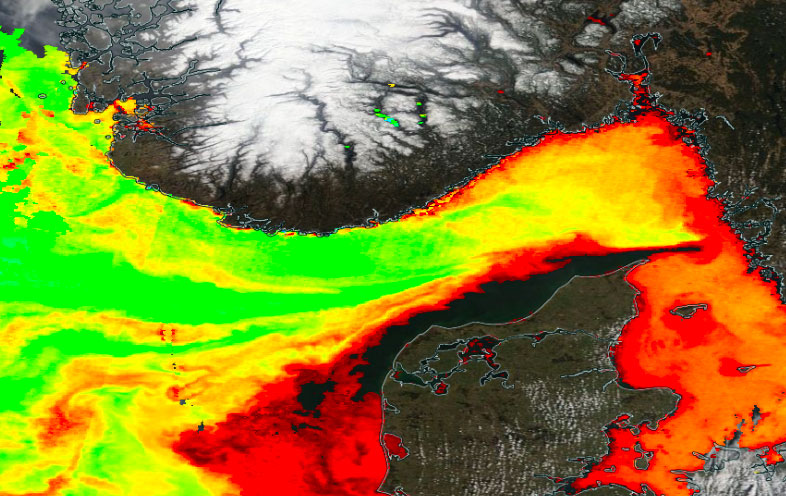HABHB
Harmful High Biomass Blooms – Warning system for finfish aquaculture
Overview
Species of microalgae that are regarded as non-harmful species are associated with finfish mortality when they accord in high biomass, either directly by negative impact on the gills or as part of multitrees effects for finfish in cages. Furthermore, while the robustness of marine ecosystems in the fjord will be affected in the future by climate change, through changes in the physical conditions, high biomass blooms could have greater and more negative consequences for coastal ecosystems by causing oxygen depletion in the Norwegian fjords.
In addition, climate change affects controlling parameters for harmful algal blooms. Effects such as increased precipitation and surface runoff (i.e. nutrients, sediment, temperature), water column stability changes, increasing temperatures, as well as earth system scale changes in temperature, wind, water chemistry and currents will affect the likelihood of harmful algal blooms.
The HabHB solution
In this context, setting up a warnings system for high biomass blooms of phytoplankton will give information regarding bloom events that could contribute to reduced risk. However, using only in situ measurements is not possible, due to logistic issues and low horizontal resolution. The use of satellite information gives high spatial and temporal resolution optical data for detecting and documenting ongoing algal blooms. Combining in situ data with satellite images and merging with physical oceanographic models will make it possible to predict the spread of such blooms in aquaculture intensive areas of the coast.
The project will further develop and validate existing warning services based on existing and new satellite data on the coast and open ocean, by combining satellite information, in situ measurement of chlorophyll, and water samples for identifying species composition. Other data on optical conditions in the coastal water, e.g. yellow substance and organic particles, will be important for improvement of chlorophyll estimates. Measurements along the coast provide an important baseline, and data will be gathered by the project, from authorities and through community feedback (e.g. fish farms). The information will be used in the existing warning system for high biomass blooms, through the already up-and-running web-portal Algestatus.hi.no, which is openly available and established for the aquaculture industry, public, and authorities.
Application site(s)
The project will cover the Norwegian coastline, including the fjord systems. In terms of management, the coast will be divided into 13 different areas, based on the national division of finfish production areas in Norway (Directorate of Fisheries).
Data
Satellite
- Sentinel-2
- Sentinel-3 (OLCI)
- Worldview (PACE/OCI)
- Other data e.g.ESA CHIME could be relevant
Other
In situ data from ongoing monitoring program run by IMR covering:
- cDOM,
- phytoplankton
- other parameter particles affecting the optical signal, to improve the algorithms for chlorophyll estimates.
Results - Final product(s)
The following items will be produced and available through the public web-portal Algestatus.hi.no :
-
maps with information regarding potential harmful High Biomass blooms of phytoplankton in coastal waters with uncertainties, combining satellite information with phytoplankton species composition.
-
Weekly Information about risk of harmful high biomass blooms.
Project news
🎥 04/07/2025: Presentation of the HABHB project at the 1st ClimateSCOpe “Monitoring our oceans”






